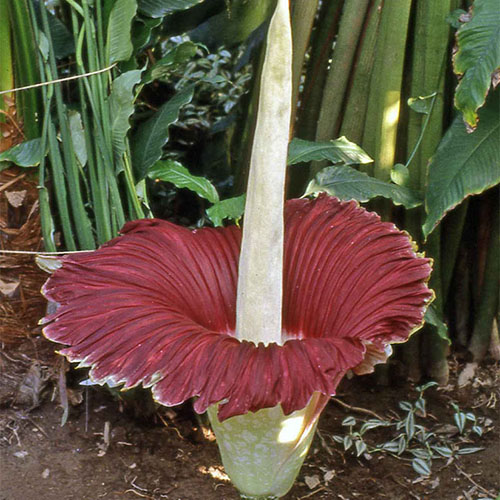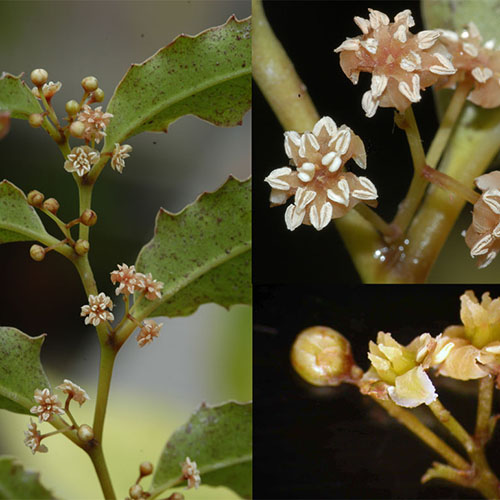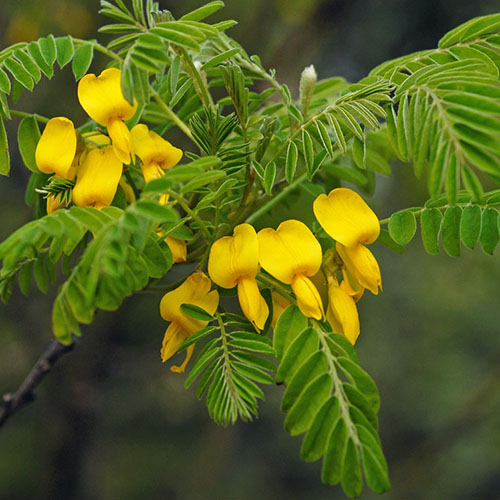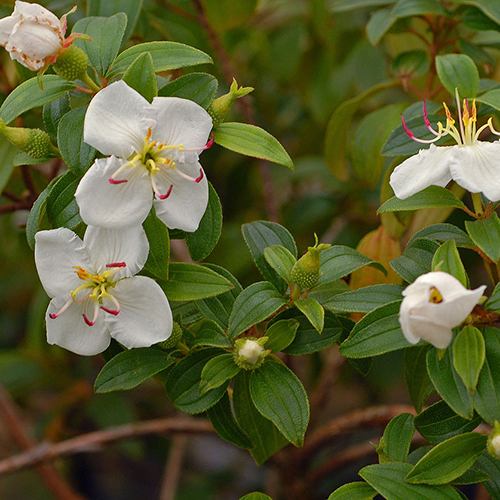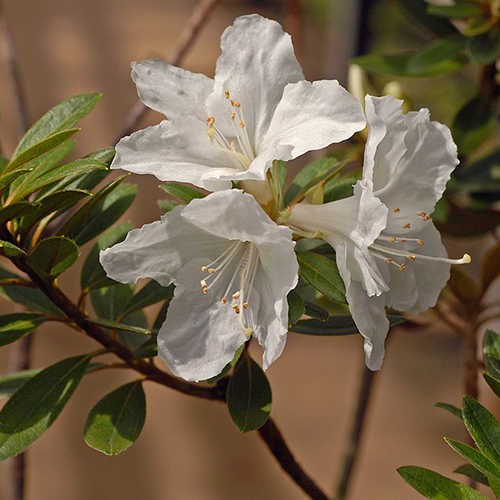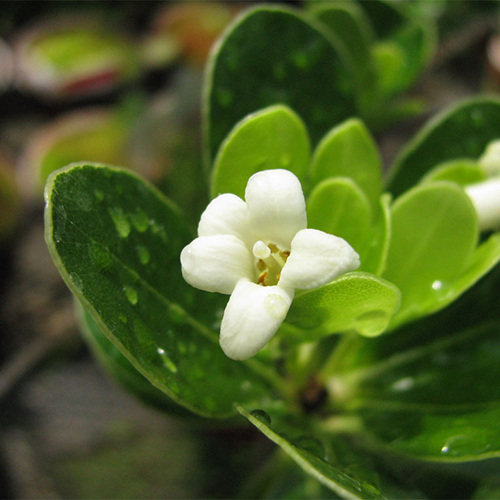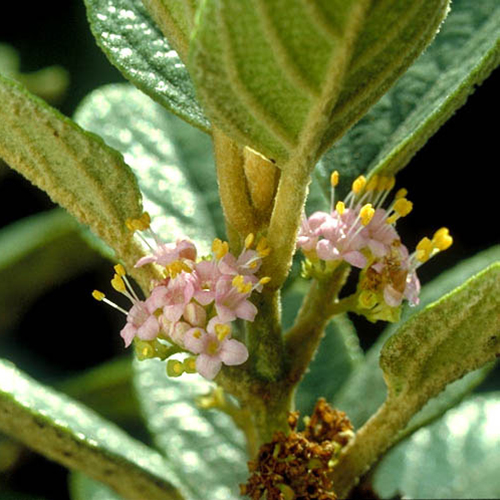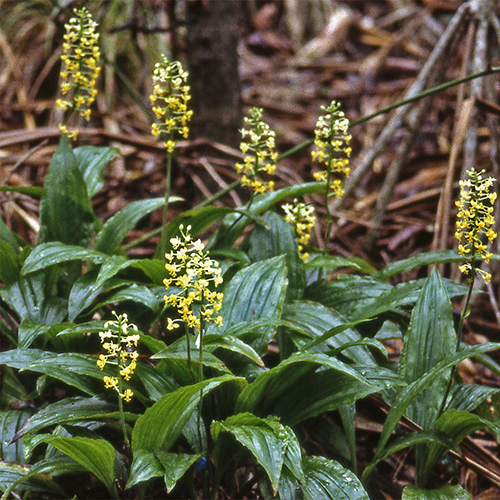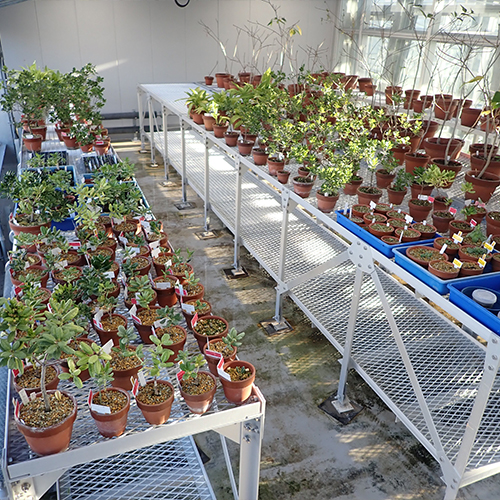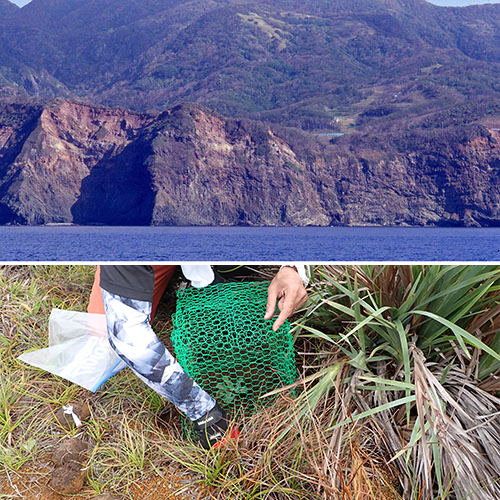About
Wild Plant Conservation and Propagation Project
Rare plants collected for research
The Koishikawa Botanical Garden is a botanical research and education facility, and the plants it cultivates are also collected for this purpose. Since there is a limit to the number of plants that can be grown and maintained in the garden, priority is given to those that are frequently used for research and education and those that are difficult to obtain, and these are collected from all over the world (especially from Asia). Many of the plants that are difficult to obtain are often rare plants with few natural populations, and as a result, the Botanical Garden has collected many endangered plants. Since the growing conditions of each wild plant are different and cultivation methods are not established, management requires experience and skill. (Click on image to enlarge)
-
- Titan arum (Amorphophallus titanum, Araceae)
- A plant native to Sumatra, it has a large corm underground and produces a single giant leaf above ground each year to photosynthesize, after which it produces an inflorescence like the one in the photo. It is said to be the largest inflorescence in the world, and when it blooms, it emits a foul odor. It is grown and exhibited in the greenhouse.
-
- Amborella trichopoda (Amborellaceae)
- This plant is native to the island of New Caledonia. Phylogenetic analysis based on DNA sequences has shown that it is a so-called “primitive” plant, the first of today’s angiosperms to have diverged from other angiosperms. It is dioecious and its flowers are small, about 3 mm in diameter. (Male flowers are shown on the upper right and female flowers on the lower right)
-
- Echinosophora koreensis (Fabaceae)
- This species was described by Takenoshin Nakai in 1923 as a new species in the independent genus Echinosophora, but it is now considered appropriate to be included in the genus Sophora based on molecular phylogenetic studies. It is endemic to the Korean peninsula and is considered an endangered species. It is exhibited in the Systematic Garden.
Conservation and propagation of endangered endemic plants in the Ogasawara Islands and reintroduction to their native habitats
Koishikawa Botanical Garden has been conducting research on the plants of Ogasawara Island and collecting endemic plants since the early Meiji period (1868–1912). Since the 1980s, we have been actively involved in the conservation of endangered species, not only by collecting and preserving them in the Botanical Garden, but also by reintroducing seedlings propagated in the Garden to their native habitats, with the aim of maintaining local populations of these species and eventually reviving them in their natural state. (Currently, we do not reintroduce seedlings out of concern for the unintentional introduction of non-native organisms). In 2004, a conservation and propagation project plan was formulated by the Japanese government based on the designation of rare species under the "Act on Conservation of Endangered Species of Wild Fauna and Flora". Currently, we are engaged in the "Ogasawara Rare Wild Plants Conservation and Propagation Project" for 12 species under contract with the Ministry of the Environment, and are involved in in situ and ex situ conservation. (Click on image to enlarge)
-
- Melastoma tetramerum (Melastomataceae)
- Endemic to Chichijima Island in the Ogasawara Islands, the only plant on Higashidaira died in 1983. Later, another population was found on the east coast, but it is now in decline. Plants propagated at the Koishikawa Botanical Garden have been reintroduced to their original habitat.
-
- Rhododendron boninense
- Endemic to Chichijima Island in the Ogasawara Islands, the only remaining wild plant of this species is found on Tsutsujiyama. It is difficult to cultivate unless the seedlings are grown in Ogasawara soil. Plants propagated at the Koishikawa Botanical Garden have been replanted in their original habitat, resulting in a population of about 60 plants.
-
- Pittosporum parvifolium (Pittosporaceae)
- It is endemic to Chichijima Island in the Ogasawara Islands. Other Pittosporum species in Ogasawara include P. beecheyi, P. chichijimense, and P. boninense, which are closely related to each other and are thought to have diverged relatively recently in the Ogasawara Islands.
-
- Callicarpa parvifolia (Lamiaceae)
- Like the Pittosporum species, Callicarpa has diverged into several species within the Ogasawara Islands. Recent environmental changes are said to have caused hybridization among them, and it is necessary to select genetically pure individuals for species conservation.
-
- Calanthe hattorii (Orchidaceae)
- This species is found on the islands of Chichijima and Anijima. Since it produces few fruits in the wild, artificial pollination is used to produce fruits, and the seeds are grown in sterile culture to increase the number of offspring. Seeds are also sown directly in their native habitats in the hope that they will germinate.
-
- Conservation of the species targeted by the Conservation and Propagation Project
- Some species are difficult to conserve in their natural habitats alone due to environmental changes or the disappearance of suitable habitats. Therefore, ex situ conservation is necessary to complement in situ conservation. In addition, it is important to conserve the genetic variation of the original population for future replanting in their native habitats. The Koishikawa Botanical Garden is systematically conserving the genetic lines of 12 species that are targeted by the Conservation and Propagation Project.
-
- Distant view of the Hahajima Island (top) and the anti-animal fence of Crepidiastrum grandicollum (bottom)
- The Ogasawara Islands are an oceanic island uplifted by submarine volcanic activity, and there were no terrestrial organisms at first. Because of their remoteness from the continent, very few organisms colonized the islands, but they became the ancestors from which endemic species evolved. However, because of their small population size and restricted habitat, their survival was threatened by the slightest change in the environment. Recent climate warming and drought are said to have had a major impact. In addition, goats and rats introduced by humans are causing severe feeding damage, and fences have been erected to prevent damage to species such as Crepidiastrum grandicollum and Callicarpa parvifolia.





